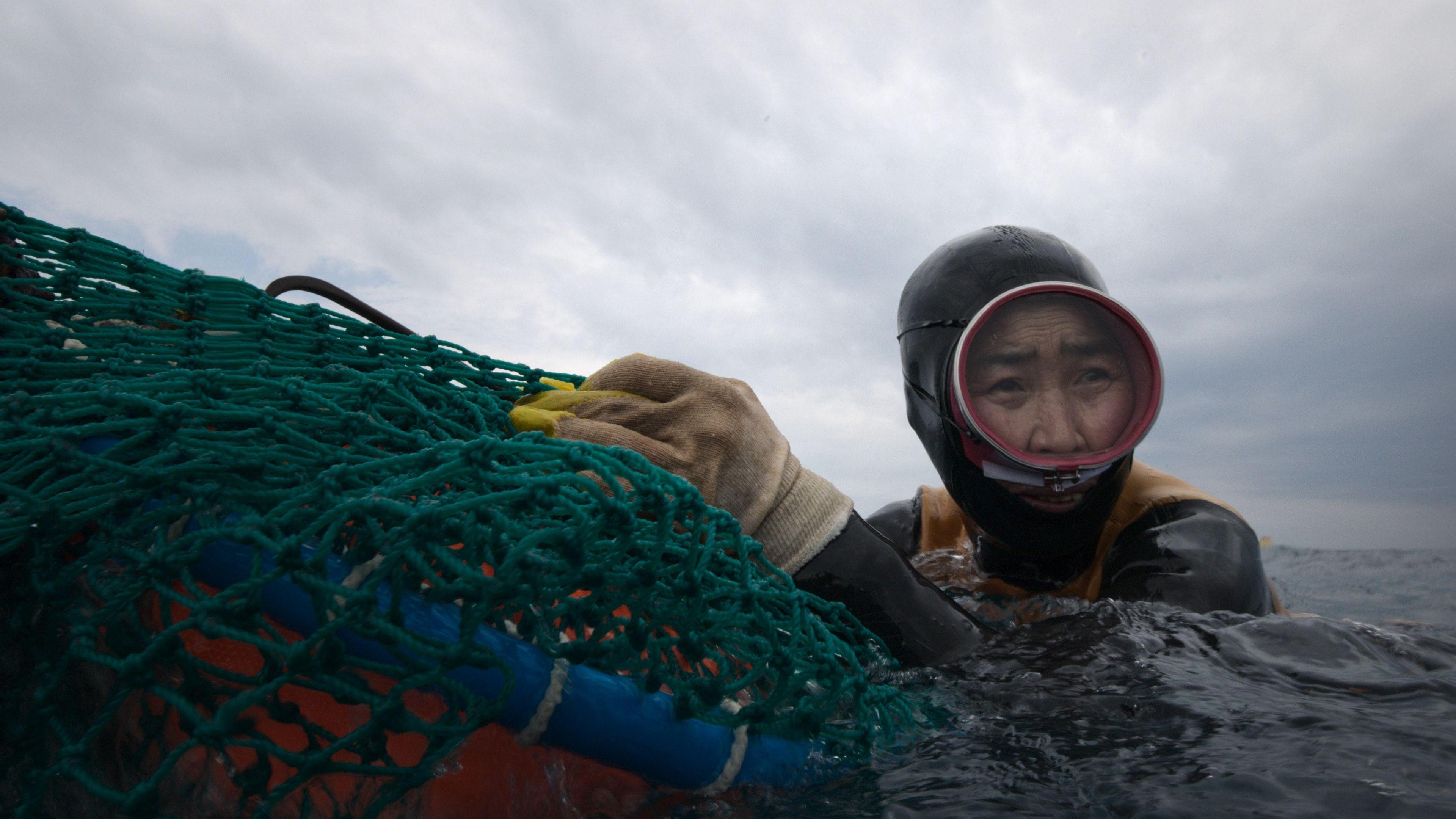'This seaside village's mermaids myth is still growing'
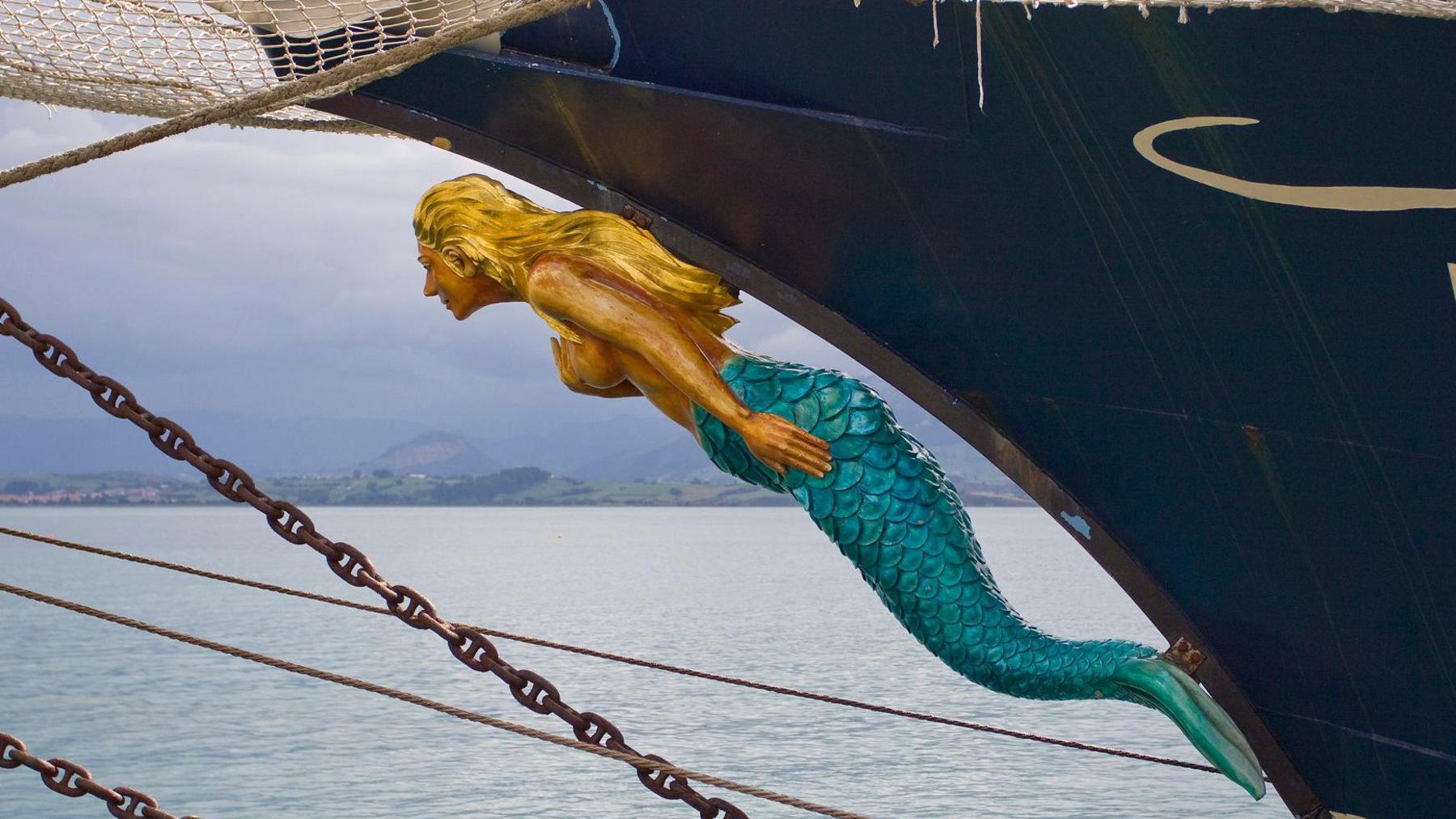
Mermaids have featured in folklore, myth and legend across the world for hundreds of years
- Published
From Shakespeare to Disney's Ariel and Darryl Hannah, mermaids make frequent appearances in theatre, literature and film, and are often mentioned in folk tales from all over the world. Now, the historical roots of a mermaid myth with its origins in Yorkshire - the Staithes Mermaids - have been uncovered.
"The Staithes Mermaids have interested me for a long time because I'm from Yorkshire and we don't have other mermaid legends," explains Prof Sarah Peverley, from the University of Liverpool.
Alongside colleague Chloe Middleton-Metcalfe, Prof Peverley, who is originally from Hull, has been researching mermaids for the past decade.
They have now released findings suggesting that while the tale of the Staithes Mermaids, which is Yorkshire's only known mermaid myth, was first published in 1924, it has probably been circulating in the local fishing community for at least 300 years.
It was no easy task trying to dive deep into the murky depths of history to find where the myth of the Staithes Mermaids first emerged, says Prof Peverley.
"It's very difficult to pin down where they've come from when they've circulated in oral traditions before they get captured in print," she explains.
"It's not until the late 19th Century and the early 20th Century that collectors of folklore started recording and going around communities capturing these great stories our ancestors told."

Prof Sarah Peverley gave a public talk on The Mermaids of Staithes at Ferens Art Gallery, Hull, in May
This legend from Staithes, in North Yorkshire, tells of two mermaids who were washed up on the seaside village's beach after a storm, only to be incarcerated, mocked and even stoned by locals.
When they finally escaped, one of the mermaids cursed the village with the words: "The sea shall flow to Jackdaws' Well" and, so the myth goes, part of the village was eventually lost to floods.
Prof Peverley says she first tracked down the tale of the Staithes Mermaids in an edition of The Whitby Gazette from March 1924, which mentioned a talk by local resident Robert Brown.
"Brown had been born with paralysis of the legs, which I think is one of the reasons the legend got captured in the first place," she says.
"If he hadn't have been born with that disability, he would have followed his father and grandfather to sea as a fisherman. Instead, he became a kind of lifelong scholar and self-educator.
"He'd given this talk to the Staithes Study Circle in January 1924, and in that talk he relayed the version of The Mermaids of Staithes legend that he has in his printed version. It appeared in the paper a couple of months later."
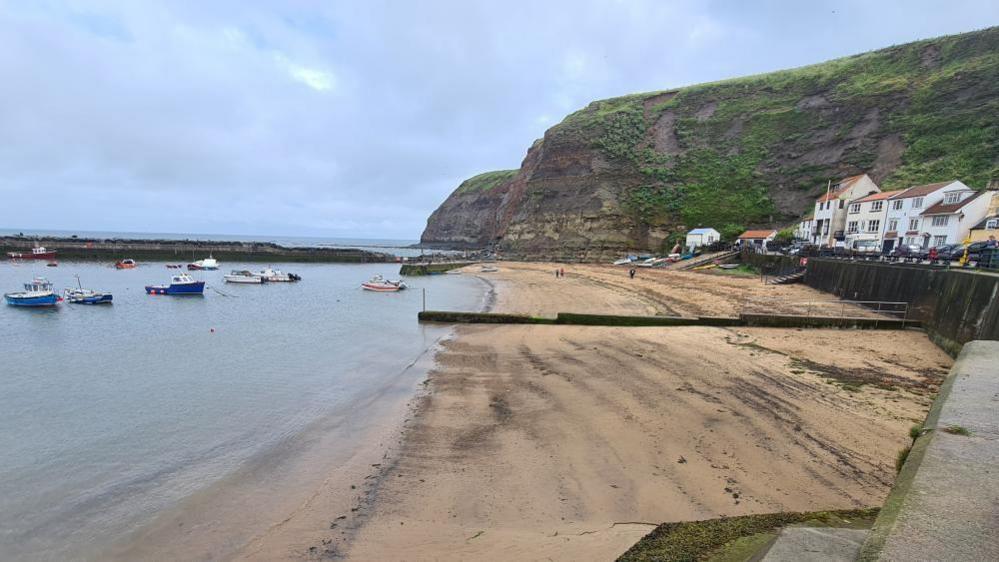
Retellings of The Mermaids of Staithes align with the economic fortunes of the town, Prof Peverley says
Prof Peverley says that by comparing this tale with similar legends in the North West, Cornwall and Wales, she concluded the story was probably much older.
"What's unique about Brown's version, and then the next version that's told 53 years later by another local resident called Ian Crowden, is that both of them contain a really enigmatic reference to 'egg broth'," she says.
"If you search on the internet for it, all later retellings miss that out because it didn't make sense to most people.
"So, when you then start digging, other unique tales get thrown up.
"There's one in the Isle of Man first recorded in 1726 that has a similar story of a mermaid talking to other merfolk about how humans are silly because they throw away their egg broth - the water their eggs have been boiled in.
"When that particular tale was being told, like the Staithes one, egg broth must have meant something later audiences are missing.
"It turns out it's connected with superstition: it's about the sea, about witches, changelings and fairies.
"Supernatural creatures have special knowledge of the powers of egg broth, whereas humans don't."
Prof Peverley says it was "100% difficult to prove", but it seemed to hint at the fact the story from Staithes "was circulating in a much earlier period, when all of this would have made sense to the people telling these stories".
Meanwhile, further research into "Jackdaws' Well", also mentioned in the tale, and the dating of storms that hit the coastline, back up Prof Peverley's claim of a much earlier date for the legend than its telling in 1924.
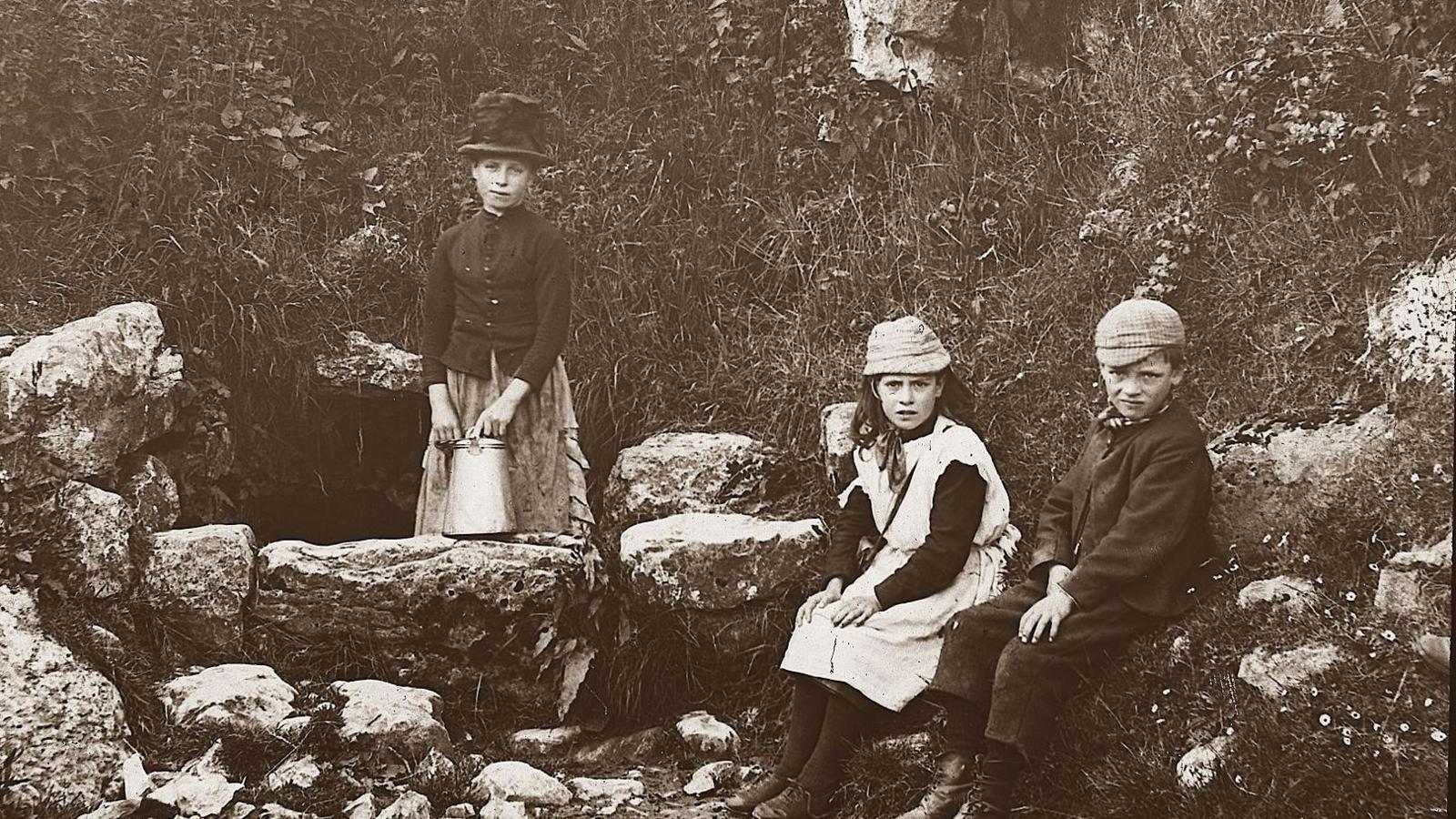
Jackdaws' Well in the 1890s before it was lost to a landslide
However, despite its age and the question marks over how far it goes back into the mists of time, the tale of the mermaids certainly lives on in Staithes to this very day.
Prof Peverley says: "This was one of the reasons we managed to track down Brown, because we talked to communities there, especially the staff at the museum.
"There are some individuals who still work in the fishing community and who have copies of typescripts of Brown's story."
Prof Peverley says she believes that the telling of the story is linked with changes in the economic fortunes of Staithes, with the mermaids reportedly resurfacing at times of decline in the fishing industry.
Today, Staithes is more reliant on tourists than trawlers, but the famous story of the mermaids continues to thrive in the local art scene and among visitors.
"One gentleman we spoke to does tours and he takes people out and he'll tell them the legend of the Mermaids of Staithes, to which he adds his own unique bits," Prof Peverley says.
"He adds in a joke that some of the rocks near the bottom of the cliff are where Neptune meets his mermaids. So the legends are still growing."
Get in touch
Tell us which stories we should cover in Yorkshire
Listen to highlights from North Yorkshire on BBC Sounds, catch up with the latest episode of Look North.
Related topics
More stories like this
- Published7 July 2024
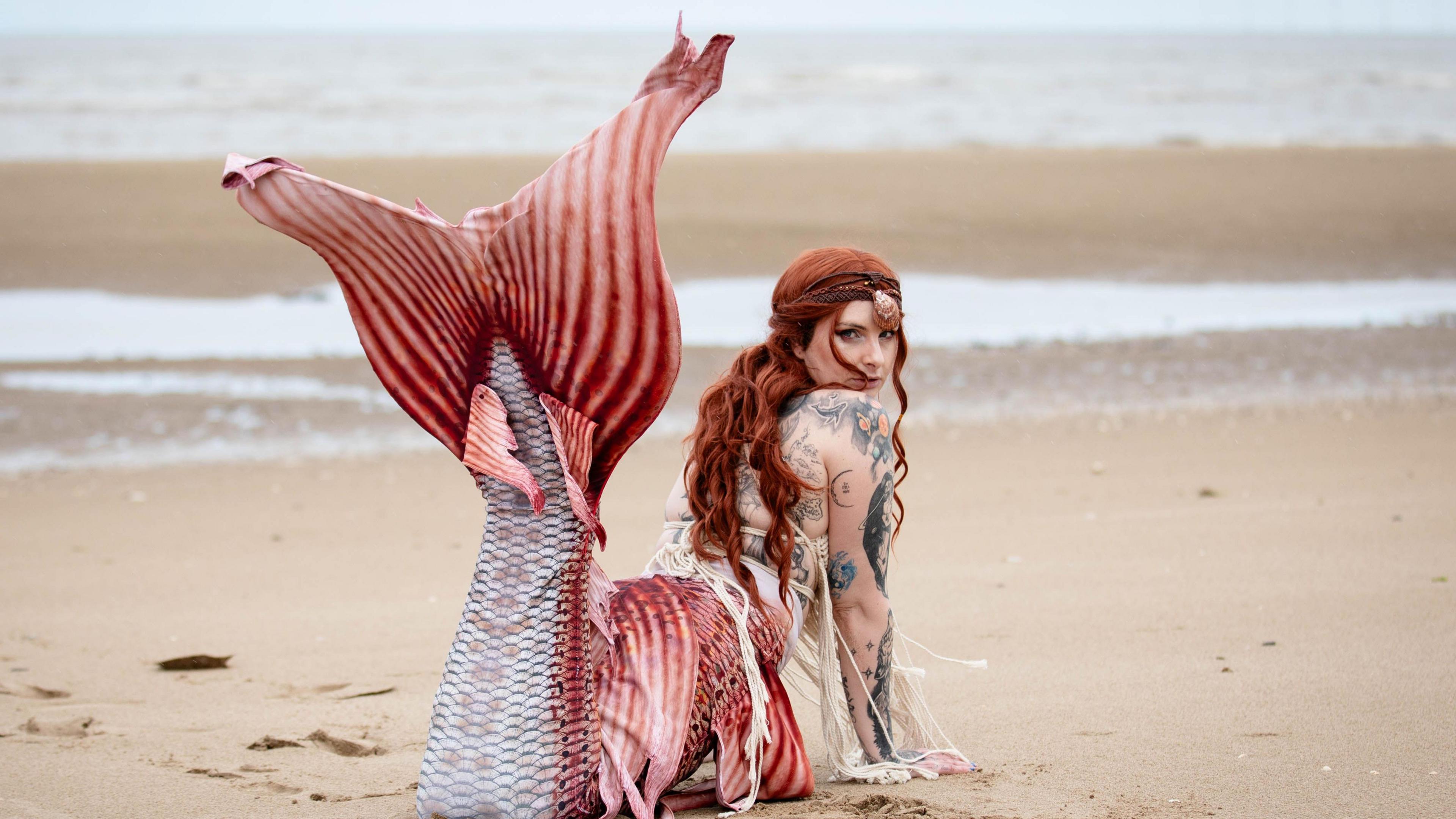
- Published18 November 2024

- Published11 October 2024
